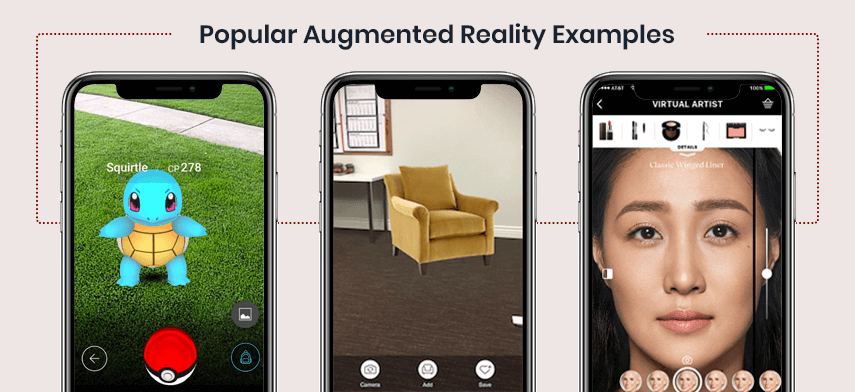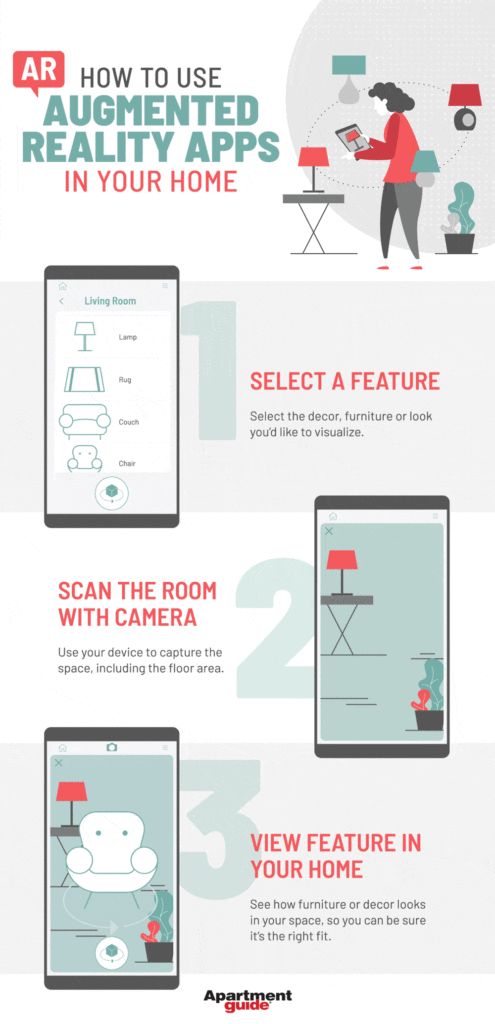Augmented reality has become a buzzword in the world of technology, and it’s not hard to see why. With its ability to blend the digital and physical worlds, augmented reality has revolutionized the way we interact with the world around us. But what exactly is augmented reality, and how does it work? In this article, we’ll explore the basics of augmented reality and provide some real-life examples to help you better understand this exciting technology.
At its core, augmented reality is a technology that overlays digital information on top of the real world. This can be achieved through the use of devices such as smartphones, tablets, and smart glasses, which use cameras, sensors, and other technologies to detect and track the physical environment. By doing so, augmented reality can enhance the user’s perception of reality by adding digital elements that appear to interact with the real world. From gaming and entertainment to education and healthcare, the applications of augmented reality are vast and varied, and its potential for future development is truly limitless.
Augmented Reality (AR) is an interactive experience of a real-world environment where objects that reside in the real-world are “augmented” by computer-generated perceptual information. Examples of AR applications include Snapchat lenses, Pokemon Go, Google Translate and Ikea Place.
In Snapchat lenses, users can apply AR filters to their selfies and images. Pokemon Go allows players to capture, battle, and train virtual creatures, called Pokémon, which appear on device screens as though in the real world. Google Translate uses AR to translate words or phrases from one language to another. Ikea Place uses AR to help customers visualize how furniture will look in their homes.

What is Augmented Reality Examples?
Augmented reality (AR) is a technology that overlays digital information onto the physical world. It is used in a variety of applications, from gaming to entertainment to industrial. AR can be used to enhance the user experience by providing a more interactive and immersive experience. It can also be used to provide contextual information about the physical environment. In this article, we will explore some of the most popular examples of augmented reality.
Medical AR
Medical AR is used to help medical professionals diagnose and treat patients more accurately. It can be used to provide visual information to doctors and nurses while they are performing procedures. For example, medical AR can be used to project 3D images of organs onto the patient’s body, allowing doctors to more accurately diagnose and treat the patient.
Medical AR can also be used to help surgeons perform complex operations. For instance, surgeons can use AR to project 3D models of organs and tissues onto the patient’s body before making an incision. This helps the surgeon to plan the operation more precisely and reduce the risk of complications.
Entertainment AR
Augmented reality is also being used to enhance the entertainment industry. For example, it can be used to create immersive experiences in video games and virtual reality. It can also be used to create interactive experiences in movies and television shows. For example, it can be used to project characters and objects onto the screen, allowing viewers to interact with them.
AR is also used to create interactive experiences in theme parks and other attractions. For example, it can be used to project virtual rides and attractions onto an empty space, allowing visitors to experience the attraction as if they were actually there.
In addition, AR can be used to create interactive experiences in museums. For example, it can be used to project images and videos onto artifacts and artworks, allowing visitors to explore the history and context of the piece.
Retail AR
Augmented reality is also being used in the retail industry. For example, it can be used to create virtual stores in physical locations. For instance, retailers can use AR to project images of products onto their store shelves, allowing customers to virtually “try on” the product before they purchase it.
AR can also be used to provide customers with more information about the products they are considering. For example, retailers can use AR to project detailed images and videos of the product onto the store shelves, allowing customers to get a better understanding of the product before they buy it.
In addition, AR can be used to create interactive experiences in retail stores. For example, it can be used to project virtual displays onto store shelves, allowing customers to interact with the product and learn more about it.
Frequently Asked Questions
Augmented reality (AR) is a technology that superimposes a computer-generated image on a user’s view of the real world, thus providing a composite view.
What is Augmented Reality?
Augmented reality (AR) is a technology that enhances a user’s real-world experience by superimposing a computer-generated image on their view. This technology enables the user to view an augmented version of the environment they are in, with the image being generated according to the user’s specific needs. For example, a user could view a 3D model of a product they are interested in buying, or they could view a virtual map of their surroundings. AR also enables users to interact with the environment in ways that would not be possible in the real world, such as playing interactive games or manipulating objects in the environment.
What are some examples of Augmented Reality?
One of the most popular examples of augmented reality is the mobile game Pokémon Go. This game uses the camera on a user’s smartphone to overlay Pokémon characters onto their view of the real world. Other examples of augmented reality include virtual reality headsets, such as the Oculus Rift and the HTC Vive, which enable users to explore virtual worlds. Augmented reality is also used in a variety of other applications, from education to healthcare. For example, medical professionals can use augmented reality to view a patient’s anatomy in 3D, enabling them to make more accurate diagnoses.
How is Augmented Reality used?
Augmented reality is used in a variety of ways, from gaming and entertainment to education and industry. In gaming, AR is used to enhance the user’s experience by overlaying 3D objects and characters onto their view of the environment. In education, AR can be used to provide students with an interactive 3D model of an object or environment they are studying. In industry, AR can be used to provide workers with real-time data and instructions, enabling them to work more efficiently and safely.
What are the benefits of Augmented Reality?
The main benefit of augmented reality is that it enables users to interact with the environment in ways that would not be possible in the real world. This can provide a more engaging and immersive experience for the user, making activities such as gaming and learning more enjoyable. Augmented reality can also provide users with more accurate information about their environment, enabling them to make better decisions. Finally, augmented reality can be used to improve safety, as it can provide workers with real-time data and instructions, reducing the risk of accidents.
What are the limitations of Augmented Reality?
One of the main limitations of augmented reality is that the technology is still in its early stages, and there are certain technical challenges that need to be addressed. For example, the accuracy of the augmented reality experience can be limited by the quality of the device’s camera, or by the quality of the data used to generate the augmented reality experience. Additionally, augmented reality can be limited by the bandwidth of the device, as the data required to generate the experience needs to be downloaded in real time. Finally, augmented reality can be limited by the user’s knowledge of the technology, as some users may be unfamiliar with how to use the technology in an effective manner.
In conclusion, augmented reality is a technology that has revolutionized the way we perceive and interact with our environment. With the help of AR, we can enhance our real-world experiences by overlaying digital elements such as images, videos, and 3D models onto the physical world. The applications of AR are endless, ranging from entertainment and gaming to education and healthcare. Moreover, AR has the potential to transform industries such as architecture, retail, and tourism by providing immersive and personalized experiences to customers.
The examples of augmented reality are numerous and diverse, with new ones emerging every day. Some of the most popular AR applications include Pokemon Go, Snapchat filters, and IKEA Place. In the healthcare industry, AR is used for medical training and simulation, while in the education sector, AR is employed to make learning more engaging and interactive. With the increasing availability of AR devices such as smartphones, tablets, and smart glasses, the future of AR looks promising. As more and more industries adopt this technology, we can expect to see a world where the lines between the real and digital worlds are blurred, and our experiences are enhanced in ways we never thought possible.



Mein Fokus als Webentwickler liegt auf responsivem Design.